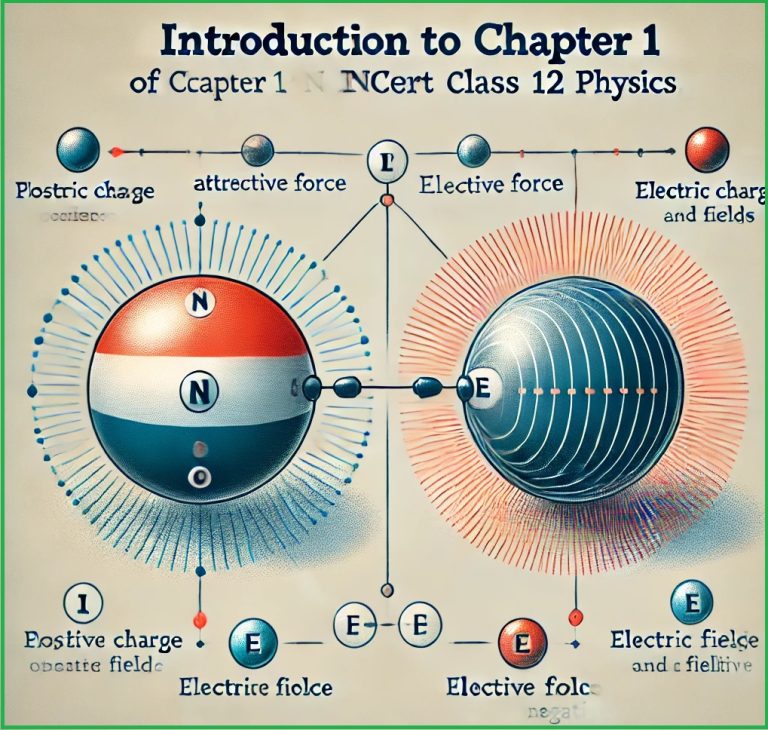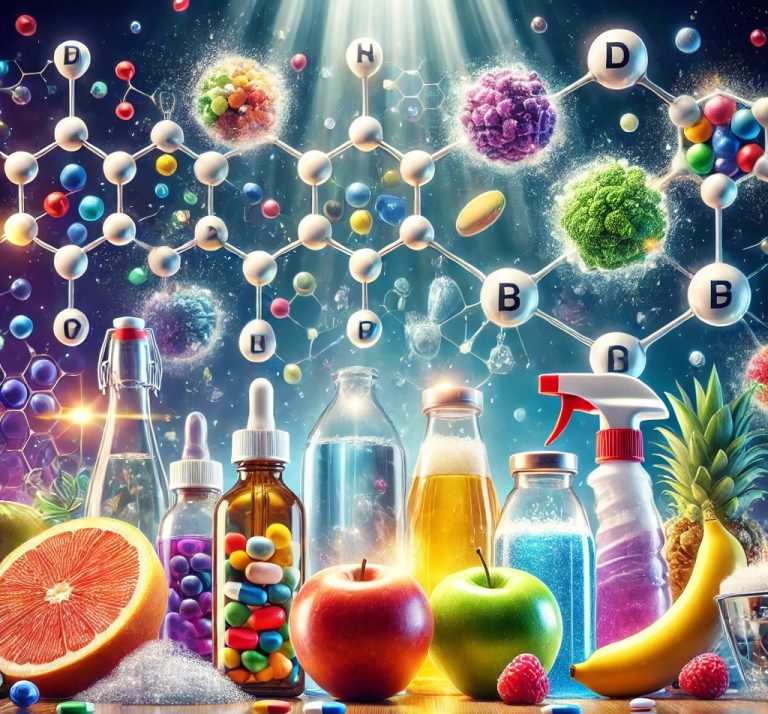The Rate of a Chemical Reaction: An In-Depth Exploration
The rate of a chemical reaction is a fundamental concept in chemistry, impacting everything from industrial manufacturing to biological processes. It describes how quickly reactants transform into products, measured by the change in concentration of reactants or products over time. Understanding reaction rates helps chemists control and optimize reactions, making processes more efficient and sustainable.
In this detailed exploration, we’ll discuss the definition and measurement of reaction rates, factors that influence them, rate laws and reaction order, collision theory, and practical applications.
1. Introduction to Reaction Rates
Reaction rate is the speed at which a chemical reaction occurs, typically expressed as the change in concentration of a reactant or product per unit time. In mathematical terms, if [A] is the concentration of a reactant, the rate of reaction can be given by:Rate=−d[A]dt\text{Rate} = -\frac{d[\text{A}]}{dt}Rate=−dtd[A]
where the negative sign indicates a decrease in reactant concentration over time. Similarly, the rate can be expressed in terms of product concentration increase:Rate=d[B]dt\text{Rate} = \frac{d[\text{B}]}{dt}Rate=dtd[B]
where B is a product of the reaction.
Reaction rate is usually measured in molarity per second (M/s), representing the concentration change over time. Factors such as temperature, concentration, surface area, catalysts, and pressure significantly influence how quickly a reaction proceeds.
2. Methods to Measure Reaction Rate
Several experimental methods can measure the rate of reaction:
Monitoring Concentration
The rate of a reaction can be measured by tracking the concentration of a reactant or product over time using methods such as:
- Spectrophotometry: Measures absorbance changes in colored solutions, providing concentration information for species that absorb light.
- Titration: Determines concentration by titrating a sample at intervals, commonly used in reactions involving acids or bases.
- Conductivity: Monitors changes in ionic concentration, particularly useful for reactions producing or consuming ions.
Gas Volume Measurement
For reactions producing gases, the rate can be measured by collecting the gas and measuring its volume over time. This method is often used in reactions involving gases such as oxygen or hydrogen.
Mass Loss
In reactions where a gas escapes from an open system, the rate can be measured by the decrease in mass of the reaction vessel. This method is effective in reactions where solid or liquid reactants produce gaseous products.
Pressure Changes
In closed systems involving gaseous reactions, pressure changes correlate with reaction rates. The increase or decrease in pressure is measured to determine the reaction rate.
3. Factors Affecting the Rate of Chemical Reactions
Several factors influence the rate of a chemical reaction:
Concentration of Reactants
Increasing the concentration of reactants typically increases the rate of reaction, as more particles in the same volume lead to a higher likelihood of collisions between reactant molecules. For example, in a reaction between hydrochloric acid (HCl) and magnesium (Mg), increasing the HCl concentration increases the rate at which hydrogen gas is produced.
Temperature
Raising the temperature generally increases reaction rates. Higher temperatures provide reactant molecules with more kinetic energy, increasing their speed and collision frequency. Additionally, more molecules have the required activation energy to react, thus increasing the reaction rate. This is why food spoils faster at room temperature than in a refrigerator.
Surface Area of Reactants
In heterogeneous reactions (involving solids and liquids/gases), increasing the surface area of solid reactants increases the rate of reaction by exposing more reactant molecules to possible collisions. For example, powdered calcium carbonate reacts with hydrochloric acid more rapidly than larger chunks due to increased surface area.
Catalysts
A catalyst is a substance that increases the reaction rate without being consumed. Catalysts lower the activation energy of a reaction, making it easier for reactants to collide with sufficient energy to react. Enzymes, biological catalysts, play a critical role in speeding up biochemical reactions in living organisms, such as digestion and metabolism.
Pressure (in Gaseous Reactions)
In reactions involving gases, increasing pressure (by reducing volume) forces gas molecules closer together, leading to more frequent collisions and a higher reaction rate. This principle is applied in industrial processes like the Haber process, where high pressure increases the rate of ammonia production from nitrogen and hydrogen.
4. Rate Laws and Reaction Order
A rate law expresses the relationship between the reaction rate and the concentration of reactants. For a reaction:aA+bB→cC+dD\text{aA} + \text{bB} \rightarrow \text{cC} + \text{dD}aA+bB→cC+dD
the rate law can be written as:Rate=k[A]m[B]n\text{Rate} = k[\text{A}]^m [\text{B}]^nRate=k[A]m[B]n
where:
- kkk is the rate constant, specific to each reaction and dependent on temperature.
- [A][\text{A}][A] and [B][\text{B}][B] are the concentrations of reactants A and B.
- mmm and nnn are the reaction orders with respect to A and B, determined experimentally.
The overall reaction order is the sum of individual orders (m+n)(m + n)(m+n). Reaction order indicates how sensitive the rate is to concentration changes of reactants.
Types of Reaction Orders
- Zero-Order Reactions: Rate is independent of reactant concentration (m=0m = 0m=0), and the reaction rate remains constant over time.
- First-Order Reactions: Rate is directly proportional to reactant concentration (m=1m = 1m=1), such as in radioactive decay.
- Second-Order Reactions: Rate is proportional to the square of the reactant concentration (m=2m = 2m=2) or to the product of two first-order reactants.
5. Activation Energy and the Arrhenius Equation
Activation energy (Ea) is the minimum energy required for reactant molecules to collide successfully and form products. The Arrhenius equation expresses the relationship between temperature and reaction rate:k=Ae−EaRTk = A e^{\frac{-E_a}{RT}}k=AeRT−Ea
where:
- kkk is the rate constant,
- AAA is the frequency factor, representing the number of effective collisions,
- EaE_aEa is the activation energy,
- RRR is the gas constant,
- TTT is the temperature in Kelvin.
The Arrhenius equation shows that as temperature increases, the rate constant kkk increases, leading to a higher reaction rate.
6. The Collision Theory of Reaction Rates
Collision theory states that for a reaction to occur, reactant molecules must collide with sufficient energy (at least equal to the activation energy) and proper orientation. According to this theory:
- Collision frequency: More frequent collisions lead to more opportunities for reactions.
- Activation energy: Only collisions with energy greater than or equal to the activation energy result in a reaction.
- Orientation: Reactants must collide in a way that allows bond-breaking and bond-forming to produce products.
Increased temperature, concentration, and surface area all enhance collision frequency and improve reaction rates by increasing the number of effective collisions.
7. Practical Applications of Reaction Rates
Understanding and controlling reaction rates has numerous applications across industries and fields:
Chemical Manufacturing
In industrial synthesis, controlling reaction rates is critical for optimizing yields and efficiency. For example, the Haber process for ammonia production uses high pressure and a catalyst to speed up the reaction, making it economically viable.
Pharmaceuticals
Reaction rates are essential in drug formulation and stability testing. Drugs must dissolve at a controlled rate in the body for effective absorption, and reaction rates help predict shelf life.
Food Preservation
Controlling reaction rates is key to preserving food. Lower temperatures slow down the rate of spoilage reactions, helping to extend food freshness in refrigeration and freezing.
Environmental Science
In environmental cleanup, reaction rates determine how quickly contaminants are broken down. For example, bacteria in bioremediation degrade pollutants at specific rates, impacting the speed of environmental recovery.
Medicine and Biochemistry
In the human body, enzyme-catalyzed reactions control metabolic processes. Understanding reaction rates of these biochemical pathways is essential for developing treatments for metabolic disorders.
Energy Production and Storage
In fuel cells and batteries, reaction rates influence the rate at which energy is produced or consumed. Catalysts are often used to increase reaction rates, improving efficiency and performance in energy storage and production technologies.
8. Summary
The rate of a chemical reaction is a complex but fundamental concept that explains how fast reactants turn into products. Influenced by factors like concentration, temperature, catalysts, and surface area, reaction rates are governed by laws that enable scientists to control and predict chemical processes. The principles of reaction rates, along with theories such as collision theory and the Arrhenius equation, provide insights into the conditions that optimize reactions for practical applications across fields.
Understanding and manipulating reaction rates allow for advancements in pharmaceuticals, industrial processes, energy technology, and environmental management, underscoring the significance of chemical kinetics in science and technology.
10 Questions and Answers on the Rate of a Chemical Reaction
1. What is the rate of a chemical reaction?
- The rate of a chemical reaction is the speed at which reactants are converted into products. It is usually measured as the change in concentration of a reactant or product over time. Mathematically, it can be expressed as: Rate=−d[Reactant]dtord[Product]dt\text{Rate} = -\frac{d[\text{Reactant}]}{dt} \quad \text{or} \quad \frac{d[\text{Product}]}{dt}Rate=−dtd[Reactant]ordtd[Product] where the rate is positive for products and negative for reactants, showing how concentrations change over time.
2. How is the rate of reaction measured?
- Reaction rate can be measured by observing changes in concentration, volume, mass, or pressure of reactants/products over time. Common methods include:
- Spectrophotometry, to measure changes in absorbance in colored solutions.
- Titration, for acid-base reactions.
- Gas collection, for reactions producing gases.
- Mass change, in open systems where gas is released.
3. What factors affect the rate of a chemical reaction?
- The rate of a reaction is influenced by several factors:
- Concentration: Higher concentrations increase the number of collisions, speeding up the reaction.
- Temperature: Raising temperature increases kinetic energy, leading to more frequent and energetic collisions.
- Catalysts: Catalysts lower the activation energy, making it easier for the reaction to proceed.
- Surface Area: In heterogeneous reactions, greater surface area increases the number of collisions.
- Pressure: For gases, increasing pressure by decreasing volume brings molecules closer, increasing collision frequency.
4. What is a rate law?
- A rate law is a mathematical expression that shows how the rate depends on the concentration of reactants. For a reaction aA+bB→cC+dDaA + bB \rightarrow cC + dDaA+bB→cC+dD, the rate law can be written as: Rate=k[A]m[B]n\text{Rate} = k[\text{A}]^m[\text{B}]^nRate=k[A]m[B]n where kkk is the rate constant, and mmm and nnn are the reaction orders with respect to each reactant. These orders are determined experimentally.
5. What is reaction order, and how is it determined?
- Reaction order indicates how the concentration of a reactant affects the reaction rate. The overall order is the sum of the individual orders for each reactant in the rate law. Reaction orders (0, 1, or 2) show whether the rate is independent of concentration, directly proportional, or proportional to the square of concentration. Orders are determined experimentally by varying concentrations and observing rate changes.
6. What is activation energy (Ea), and why is it important?
- Activation energy is the minimum energy required for reactants to form products. It’s important because it determines the rate of reaction: the lower the activation energy, the faster the reaction can proceed at a given temperature. Activation energy can be calculated using the Arrhenius equation: k=Ae−EaRTk = A e^{\frac{-E_a}{RT}}k=AeRT−Ea where kkk is the rate constant, AAA is the frequency factor, RRR is the gas constant, and TTT is temperature in Kelvin.
7. How does temperature affect reaction rate?
- Temperature increases the kinetic energy of molecules, which results in more frequent and energetic collisions. Higher temperatures also mean that a greater proportion of molecules have the activation energy needed to react, increasing the rate. The rate constant kkk increases with temperature, as shown in the Arrhenius equation.
8. What is the role of a catalyst in a reaction?
- A catalyst increases the rate of a chemical reaction without being consumed. It works by providing an alternative reaction pathway with a lower activation energy, allowing more molecules to react at lower energies. Catalysts are crucial in industrial processes, as they make reactions faster and more efficient.
9. What is collision theory?
- Collision theory states that for a reaction to occur, reactant molecules must collide with sufficient energy (at least the activation energy) and proper orientation. Only a fraction of collisions meet these criteria, which is why not all collisions result in a reaction. Factors like temperature, concentration, and catalysts increase effective collision frequency, thus increasing the reaction rate.
10. How is reaction rate applied in real-world industries?
- Reaction rates are critical in industries for optimizing processes and efficiency:
- Chemical Manufacturing: In processes like the Haber process for ammonia, high pressure and catalysts are used to achieve fast reaction rates.
- Pharmaceuticals: Controlling reaction rates helps in drug formulation and stability testing.
- Food Preservation: Lowering reaction rates through refrigeration slows down spoilage.
- Environmental Cleanup: Reaction rates determine the efficiency of processes like bioremediation, where bacteria break down pollutants.
- Energy Production: In batteries and fuel cells, catalysts and controlled reaction rates optimize energy output.






